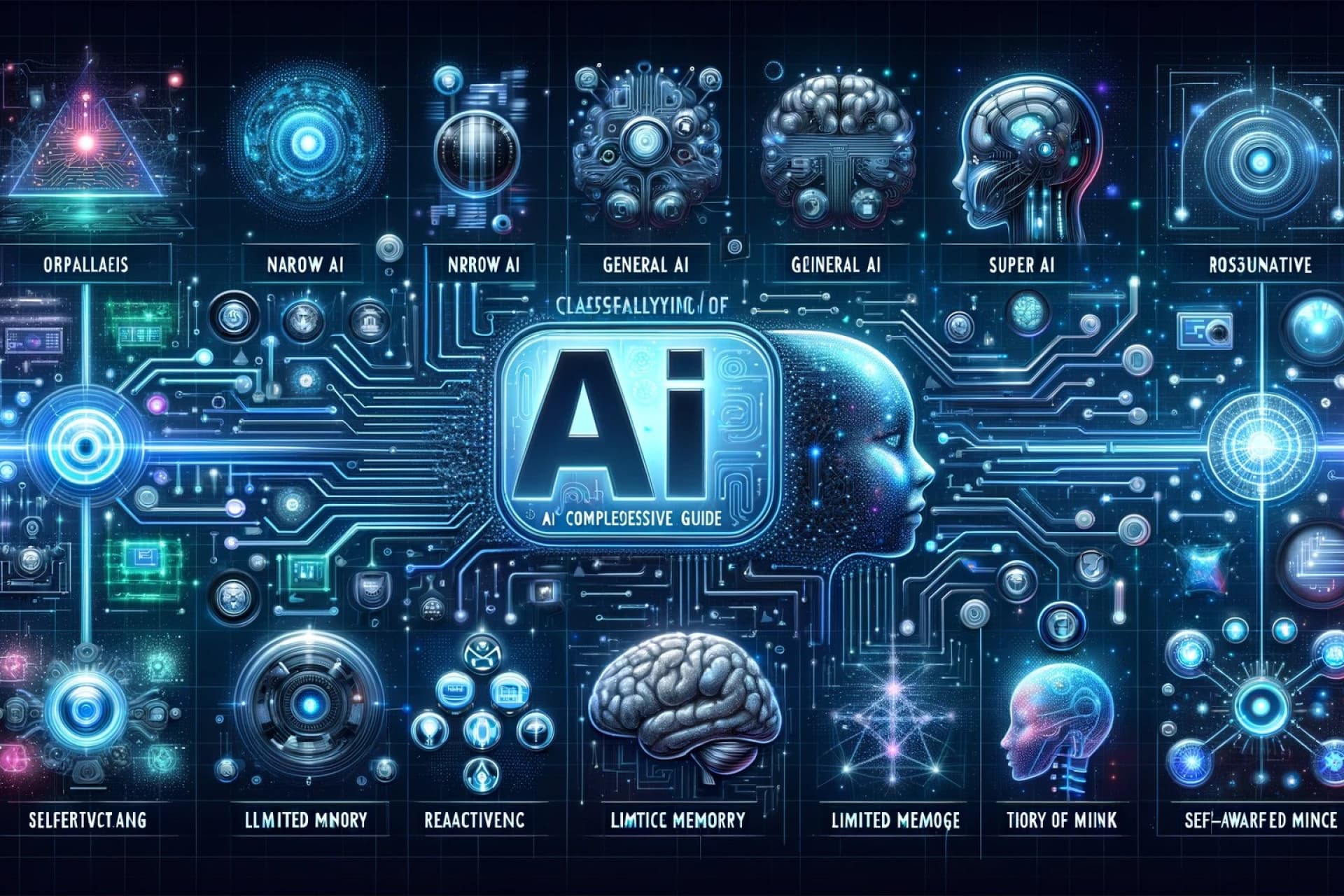The 7 Types of AI - And Why We Talk (Mostly) About 3 of Them
Artificial Intelligence (AI) is a rapidly evolving field that encompasses a wide range of technologies and capabilities. To better understand the landscape of AI, we can classify it into seven distinct types, divided into two main categories: AI capabilities and AI functionalities. Let’s delve into these categories to see what each type of AI entails and where we stand today.
AI Capabilities
1. Artificial Narrow Intelligence (ANI)
Artificial Narrow Intelligence, also known as Weak AI, is the only type of AI that currently exists. Despite its name, narrow AI is highly specialized and can perform tasks that might surpass human capabilities within its defined scope. However, it is limited to the specific tasks it is trained for and requires human input for training and operation. Examples include virtual assistants like Siri and Alexa, as well as recommendation algorithms used by streaming services.
2. Artificial General Intelligence (AGI)
Artificial General Intelligence, or Strong AI, is a theoretical concept. AGI would have the ability to understand, learn, and apply knowledge across a broad range of tasks, much like a human. It could transfer knowledge from one domain to another and learn new tasks independently, without human intervention. While AGI remains a popular topic in science fiction and speculative discussions, it does not yet exist.
3. Artificial Superintelligence (ASI)
Artificial Superintelligence represents a level of AI that surpasses human intelligence and capabilities. ASI would be able to perform cognitive tasks far beyond human abilities, including reasoning, learning, and making judgments. It could potentially have emotions, desires, and beliefs of its own. While ASI is a fascinating and sometimes unsettling concept, it remains purely hypothetical at this stage.
AI Functionalities
1. Reactive Machines
Reactive Machine AI is designed to perform specific tasks by analyzing vast amounts of data and generating outputs based on statistical probabilities. These systems do not have memory or the ability to use past experiences to influence future actions. A notable example is IBM’s Deep Blue, which defeated chess grandmaster Garry Kasparov in the late 1990s by analyzing the chessboard and predicting the outcomes of moves.
2. Limited Memory AI
Limited Memory AI can utilize past experiences and data to make informed decisions. It can track and monitor specific objects or situations over time, improving its performance with more data. Examples include self-driving cars and generative AI chatbots, which use past interactions to generate more accurate and contextually relevant responses.
3. Theory of Mind AI
Theory of Mind AI is a theoretical concept focused on understanding the thoughts and emotions of other entities, particularly humans. This type of AI would infer human motives and reasoning, allowing for personalized interactions based on individual emotional needs and intentions. Emotion AI, currently in development, aims to analyze voices, images, and other data to understand and respond to human emotions.
4. Self-Aware AI
Self-Aware AI, perhaps the most advanced and speculative form of AI, would possess self-awareness and an understanding of its own internal states. It would have its own set of emotions, needs, and beliefs, making it capable of autonomous thought and action. While self-aware AI remains a theoretical construct, it is often discussed in terms of its potential implications and ethical considerations.
Conclusion
In summary, we have explored seven types of AI, categorized into AI capabilities and AI functionalities. Currently, only three types of AI—Artificial Narrow Intelligence, Reactive Machines, and Limited Memory AI—are realized and in use today. The remaining types—Artificial General Intelligence, Artificial Superintelligence, Theory of Mind AI, and Self-Aware AI—are still theoretical and subject to ongoing research and development.
As we continue to advance in the field of AI, understanding these classifications helps us gauge our progress and envision the potential future of artificial intelligence. This taxonomy of AI types provides a framework for understanding where we are on our AI journey and what might lie ahead.

